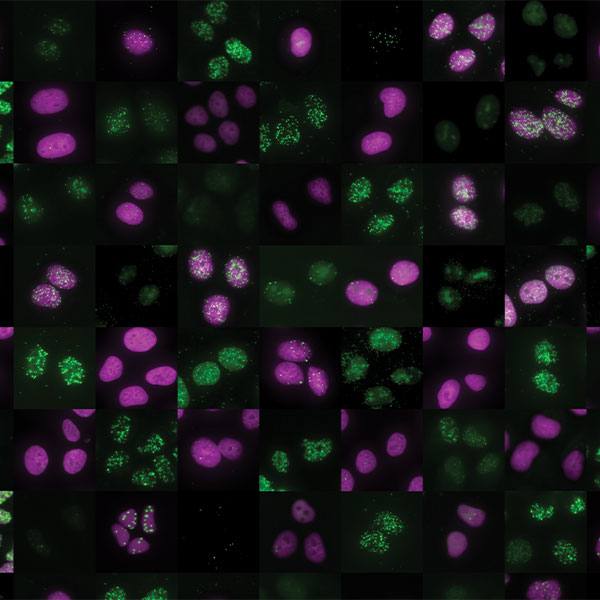-
Science Saturday: Collaborative study discovers new disease behind patient’s recurring blood clots
In 2018, a male patient in his 60s began experiencing chest pains, which turned out to be caused by multiple blood clots in his lungs. As he visited several institutions in and around his home state of Michigan, doctors conducted the typical testing panels to look for a condition called thrombophilia that causes blood clots to form too easily. But tests did not confirm the known thrombophilic conditions.
"So people were not able to give him an answer as to why he had thrombosis with potentially life-threatening clots," says Anand Padmanabhan, M.B.B.S., Ph.D., a Mayo Clinic laboratory medicine and pathology specialist.
A collaboration between Mayo Clinic and University of Michigan Health solved the medical mystery. The work led to the development at Mayo Clinic of a new methodology to test for clotting disease and the identification of a previously unknown blood clotting condition.
A clotting condition that didn’t add up
In addition to the unexplained clotting, several details about the man's condition baffled the clinicians he had seen. Why, for instance, did he have intermittent low platelet counts, known as thrombocytopenia? He was seen by Jordan Schaefer, M.D., a hematologist at University of Michigan who specializes in thrombotic disorders.
Even though he had normal platelet values, the patient’s history was concerning for the medication-related complication known as heparin-induced thrombocytopenia, or HIT. Testing confirmed this diagnosis. However, the most mysterious detail of his condition was that even though the man was no longer taking the blood-thinning drug heparin, he continued to test positive for HIT in follow-up.
Potentially life-threatening, HIT can evolve in some patients when heparin, often given to prevent clots, causes an immune reaction that interferes with the colorless blood cell fragments — platelets — that enable clotting.
"After multidisciplinary discussion, the patient's care team in Michigan began treating him with a blood thinner and periodic antibody therapy called intravenous immunoglobulin, used to treat rare persistent cases of HIT," says Dr. Padmanabhan, who specializes in platelet immunology and coagulation and who researches conditions like HIT.
Connecting the dots
The patient came to Mayo Clinic for evaluation at the Coagulation Clinic by Meera Sridharan, M.D., Ph.D., a Mayo Clinic hematologist-oncologist. Following the evaluation, Dr. Sridharan consulted with Dr. Padmanabhan to address this puzzle. Their first question was: Why had the man continued to test positive when screened for HIT antibodies even though he had long stopped taking heparin?
"We knew he'd received heparin at certain points in his therapy," says Dr. Padmanabhan, "However, the thrombosis presented in a heparin-independent manner — unlike in HIT."
Dr. Padmanabhan began working with colleagues, including David L. Murray, M.D., Ph.D., a Mayo Clinic pathologist who specializes in biochemical approaches to questions in immunology. They teamed up with Dr. Schaefer as they considered all the clinical details.
The Michigan care team had observed that the patient also had a condition called monoclonal gammopathy of undetermined significance, or MGUS. Most common in older people, MGUS is a condition where an abnormal monoclonal protein — an antibody — is present in a person's blood. Though the condition typically doesn’t cause health problems, in some cases, it can progress to serious complications, including the blood cancer multiple myeloma. But MGUS doesn’t typically cause clotting. Dr. Schaefer was concerned about the possibility of the MGUS explaining the patient’s continually testing positive for HIT and having clotting issues.
Dr. Padmanabhan assembled a team of clinician-researchers, including Mayo Clinic senior research fellow Adam Kanack, Ph.D., to explore the mystery. They wondered if the MGUS antibody was being produced against PF4 — the same platelet protein involved in HIT — and was the culprit of the clotting.
The only way to fully confirm their suspicion was to launch a study.
"When Dr. Padmanabhan told me about his interesting patient presentation, we brainstormed and immediately began to develop the techniques to solve this puzzle," says Dr. Murray.
The first step required developing unique biochemical approaches to isolate the antibody and fish it out from the patient's blood sample. Then they tested the isolated antibody, drawing on Dr. Murray's expertise in high-resolution mass spectrometry, a powerful analytical tool that can derive specific molecular information about the MGUS antibody.
The testing showed something remarkable: the MGUS antibody and the PF4 antibody were one and the same, indicating the presence of a previously unknown clotting condition. It explained why the HIT test had appeared to be positive, though the condition wasn’t HIT. "And that explains why this patient's thrombosis was recurrent, as MGUS is a chronic condition," says Dr. Padmanabhan. "This is the first confirmed case of its kind."
An important insight for the thrombosis community
The team's study, published in the medical journal Blood, describes this new type of thrombophilia, called monoclonal gammopathy of thrombotic/thrombocytopenic significance, or MGTS.

"MGTS is a disorder characterized by plasma cells producing the PF4 monoclonal antibody,” says Dr. Sridharan. “This means that MGTS causes the production of an abnormal protein which triggers recurring clots."
The discovery has electrified the field, which grapples with challenging diagnoses in patients with thrombophilia. "I’ve had conversations with a number of physicians in the multiple myeloma and thrombotic space, and they’re very excited about our findings," says Dr. Padmanabhan. "This paper is getting a lot of attention because it describes a completely new thrombophilia."
What’s next?
The study patient, now in his late 60s, continues to take blood thinners to help mitigate further clotting. But such treatment is only temporary and will need adjusting in the future. How? "We don't know for certain," acknowledges Dr. Padmanabhan. "To the best of our knowledge, this will be the first person in the world to be treated for this disease."
"Likely, therapies may include those given to patients with multiple myeloma that will attack the cells that are the apparent source of this antibody," adds Dr. Schaefer. "But the critical first step has been providing the patient with a diagnosis."
Meanwhile, Mayo physicians recently identified an additional case of MGTS. "This means the disease may not be as rare as we thought," says Dr. Padmanabhan. "Rather, it’s likely been existing under the radar, until now."
For details and a full author list, see the paper.











